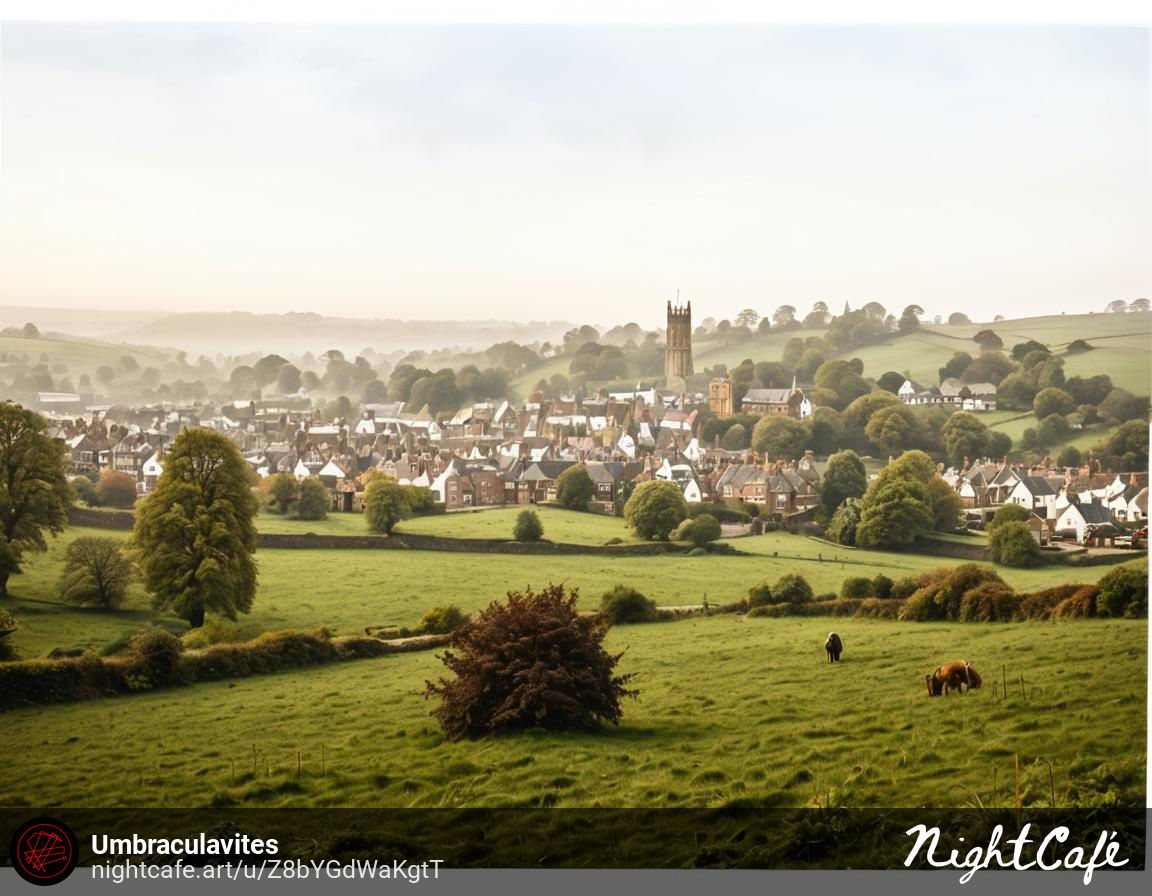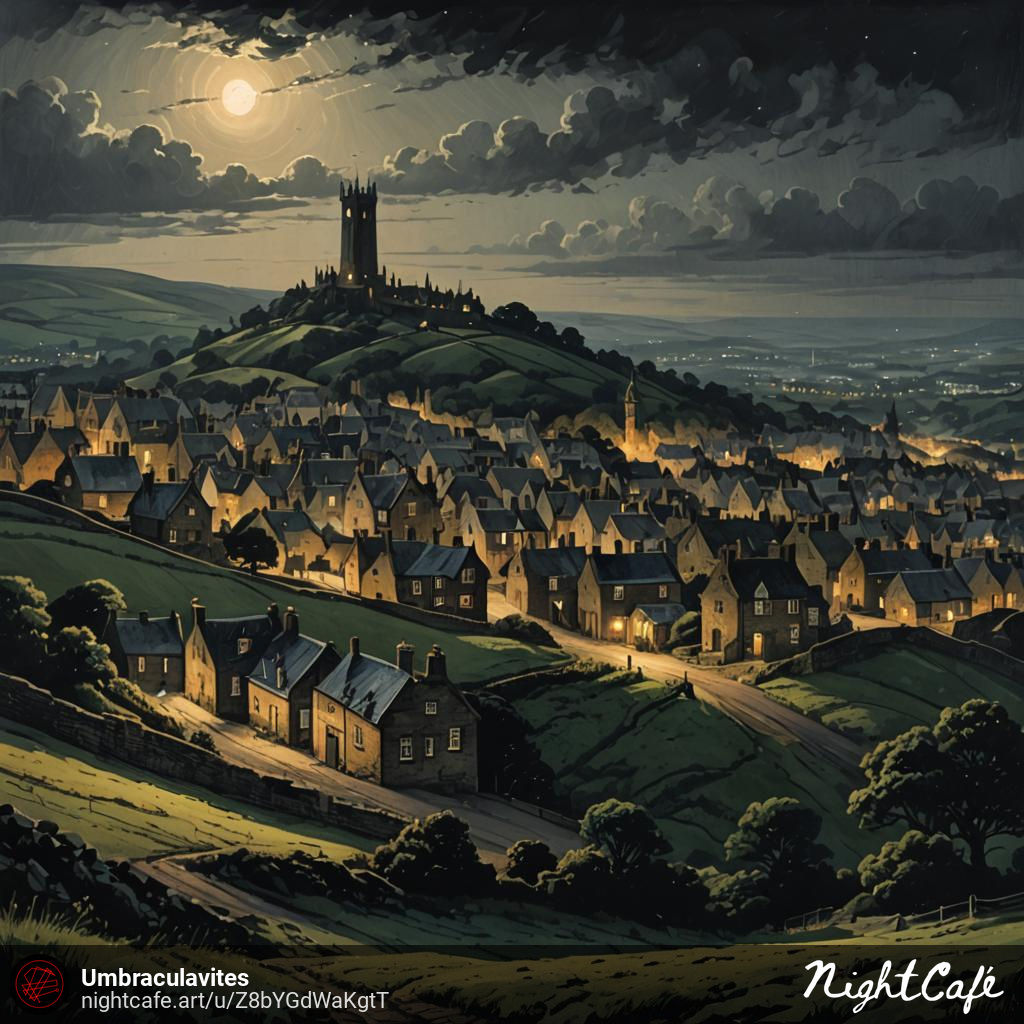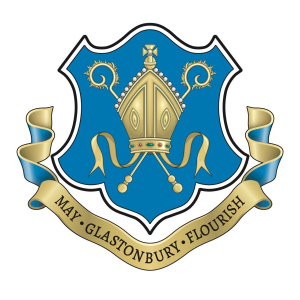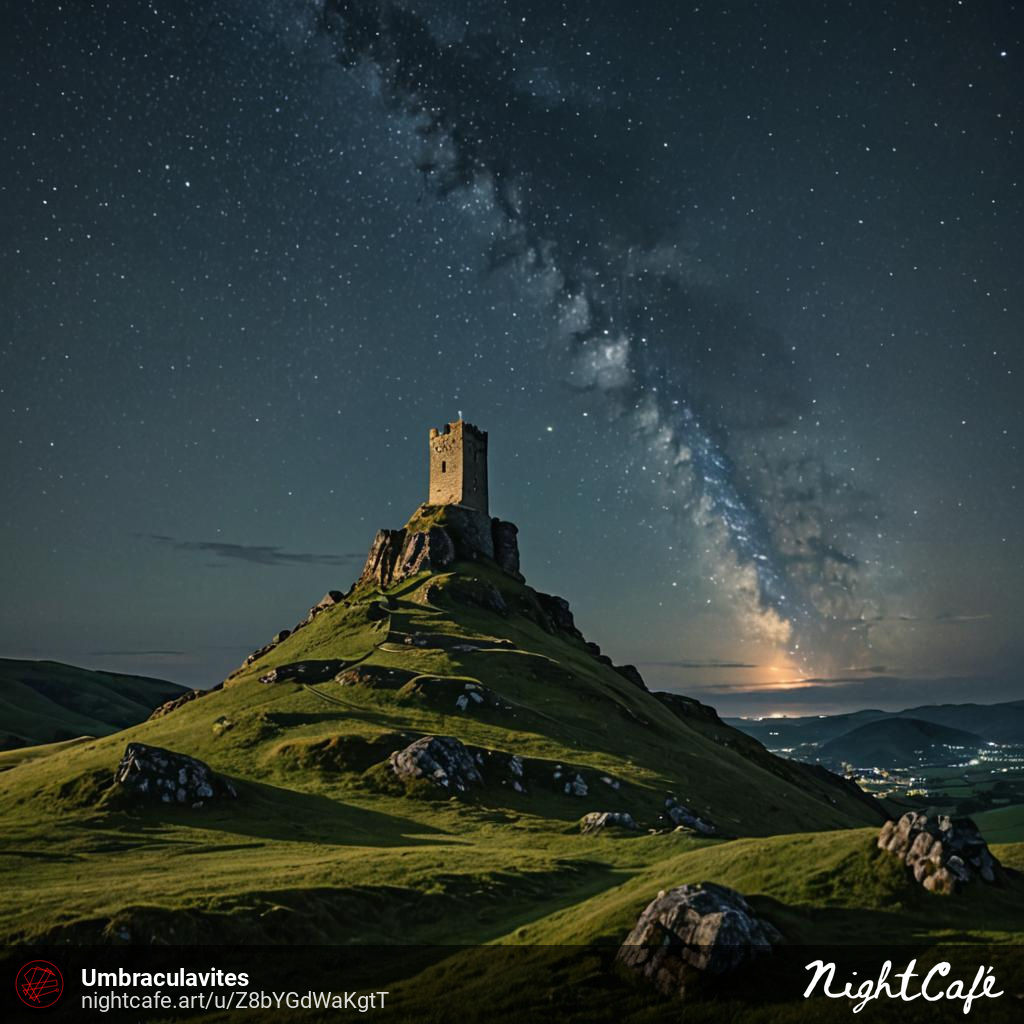Glastonbury: Difference between revisions
Cloudwalker (talk | contribs) |
Cloudwalker (talk | contribs) |
||
| Line 285: | Line 285: | ||
== <span style="color:#800000;">'''Vampires''' == | == <span style="color:#800000;">'''Vampires''' == | ||
: '''[[Friedhold Prufrock]]''' -- Tremere Archaeologist | : '''[[Friedhold Prufrock]]''' -- Tremere Archaeologist | ||
: '''[[ | : '''[[Moira Rose]]''' -- Kiasyd Scholar | ||
=== Character Creation === | === Character Creation === | ||
:[[Victorian Prototype]] | :[[Victorian Prototype]] | ||
Revision as of 15:52, 27 June 2024
Introduction
"In Glastonbury, history, myth and legend combine in such a way that most visitors cannot fail to feel the powerful atmosphere of the town. For not only is Glastonbury the cradle of Christianity in England but is also reputed to be the burial place of King Arthur. Glastonbury is a town steeped in myths and legends. Theories about the founding of the great abbey and connections to the Arthurian legends and the land of Avalon are too numerous to count. The mysterious and sacred aspects of Glastonbury attract visitors and pilgrims from all over the world who seek forgotten lands and wish to drink from sacred springs."
Glastonbury is a town and civil parish in Somerset, England, situated at a dry point on the low-lying Somerset Levels, 23 miles (37 km) south of Bristol. The town had a population of 4,213 in the 1900 census. Glastonbury is less than 1 mile (2 km) across the River Brue from Street, which is far smaller than Glastonbury. It is 139 miles from Glastonbury to London.
Evidence from timber trackways such as the Sweet Track show that the town has been inhabited since Neolithic times. Glastonbury Lake Village was an Iron Age village, close to the old course of the River Brue and Sharpham Park approximately 2 miles (3 km) west of Glastonbury, that dates back to the Bronze Age. Centwine was the first Saxon patron of Glastonbury Abbey, which dominated the town for the next 700 years. One of the most important abbeys in England, it was the site of Edmund Ironside's coronation as King of England in 1016. Many of the oldest surviving buildings in the town, including the Tribunal, George Hotel and Pilgrims' Inn and the Somerset Rural Life Museum, which is based at the site of a 14th-century abbey manor barn, often referred to as a tithe barn, are associated with the abbey. The Church of St John the Baptist dates from the 15th century.
The town became a center for commerce, which led to the construction of the market cross, Glastonbury Canal and the Glastonbury and Street railway station, the largest station on the original Somerset and Dorset Railway. The Brue Valley Living Landscape is a conservation project managed by the Somerset Wildlife Trust and nearby is the Ham Wall National Nature Reserve.
Glastonbury has been described as having a New Age community, and possibly being where New Age beliefs originated at the turn of the twentieth century. It is notable for myths and legends often related to Glastonbury Tor, concerning Joseph of Arimathea, the Holy Grail and King Arthur. Joseph is said to have arrived in Glastonbury and stuck his staff into the ground, when it flowered miraculously into the Glastonbury Thorn. The presence of a landscape zodiac around the town has been suggested but no evidence has been discovered. The Glastonbury Festival, held in the nearby village of Pilton, takes its name from the town.
Appearance
Daytime
Nighttime
City Device
Climate
Along with the rest of South West England, Glastonbury has a temperate climate which is generally wetter and milder than the rest of the country. The annual mean temperature is approximately 10 °C (50.0 °F). Seasonal temperature variation is less extreme than most of the United Kingdom because of the adjacent sea temperatures. The summer months of July and August are the warmest with mean daily maxima of approximately 21 °C (69.8 °F). In winter mean minimum temperatures of 1 or 2 °C (33.8 or 35.6 °F) are common. In the summer the Azores high pressure affects the south-west of England, however convective cloud sometimes forms inland, reducing the number of hours of sunshine. Annual sunshine rates are slightly less than the regional average of 1,600 hours. In December 1998 there were 20 days without sun recorded at Yeovilton. Most of the rainfall in the south-west is caused by Atlantic depressions or by convection. Most of the rainfall in autumn and winter is caused by the Atlantic depressions, which is when they are most active. In summer, a large proportion of the rainfall is caused by sun heating the ground leading to convection and to showers and thunderstorms. Average rainfall is around 700 mm (28 in). About 8–15 days of snowfall is typical. November to March have the highest mean wind speeds, and June to August have the lightest winds. The predominant wind direction is from the south-west.
Demonym
Districts
Economy
Geography
History
Myth & Legend
Glastonbury is notable for myths and legends concerning Joseph of Arimathea, the Holy Grail and King Arthur as recorded by ancient historians William of Malmesbury, Venerable Bede, Gerald of Wales and Geoffrey of Monmouth. The legend that Joseph of Arimathea retrieved certain holy relics was introduced by the French poet Robert de Boron in his 13th-century version of the grail story, thought to have been a trilogy though only fragments of the later books survive today. The work became the inspiration for the later Vulgate Cycle of Arthurian tales.
De Boron's account relates how Joseph captured Jesus's blood in a cup (the "Holy Grail") which was subsequently brought to Britain. The Vulgate Cycle reworked Boron's original tale. Joseph of Arimathea was no longer the chief character in the Grail origin: Joseph's son, Josephus, took over his role of the Grail keeper. The earliest versions of the grail romance, however, do not call the grail "holy" or mention anything about blood, Joseph or Glastonbury.
In 1191, monks at the abbey claimed to have found the graves of Arthur and Guinevere to the south of the Lady Chapel of the Abbey Church, which was visited by a number of contemporary historians including Giraldus Cambrensis. The remains were later moved and were lost during the Reformation. Many scholars suspect that this discovery was a pious forgery to substantiate the antiquity of Glastonbury's foundation, and increase its renown.
An early Welsh poem links Arthur to the Tor in an account of a confrontation between Arthur and Melwas, who had kidnapped Queen Guinevere.
Joseph is said to have arrived in Glastonbury by boat over the flooded Somerset Levels. On disembarking he stuck his staff into the ground and it flowered miraculously into the Glastonbury Thorn (also called Holy Thorn). This is said to explain a hybrid Crataegus monogyna (hawthorn) tree that only grows within a few miles of Glastonbury, and which flowers twice annually, once in spring and again around Christmas time (depending on the weather). Each year a sprig of thorn is cut, by the local Anglican vicar and the eldest child from St John's School, and sent to the Queen.
The original Holy Thorn was a centre of pilgrimage in the Middle Ages but was chopped down during the English Civil War.[62] A replacement thorn was planted in the 20th century on Wearyall hill (originally in 1951 to mark the Festival of Britain, but the thorn had to be replanted the following year as the first attempt did not take). The Wearyall Hill Holy Thorn was vandalised in 2010 and all its branches were chopped off. It initially showed signs of recovery but now (2014) appears to be dead. A new sapling has been planted nearby. Many other examples of the thorn grow throughout Glastonbury including those in the grounds of Glastonbury Abbey, St Johns Church and Chalice Well.
Today, Glastonbury Abbey presents itself as "traditionally the oldest above-ground Christian church in the world," which according to the legend was built at Joseph's behest to house the Holy Grail, 65 or so years after the death of Jesus. The legend also says that as a child, Jesus had visited Glastonbury along with Joseph. The legend probably was encouraged during the medieval period when religious relics and pilgrimages were profitable business for abbeys. William Blake mentioned the legend in a poem that became a popular hymn, "Jerusalem".
Temple of the Stars
The Temple of the Stars is an alleged ancient temple claimed to be situated around Glastonbury in Somerset, England.
Origin
The temple is claimed by some to depict a colossal landscape zodiac, a map of the stars on a gigantic scale, formed by features in the landscape (roads, streams, field boundaries, etc.). The theory was first put forward in 1934 by Katherine Maltwood, an artist who "discovered" the zodiac in a vision, and held that the "temple" was created by Sumerians in about 2700 BC. The idea was revived in 1969 by Mary Caine in an article in the magazine Gandalf's Garden (number 4). Compared to Maltwood's version, she turned Scorpio upside down, added a monk to Gemini, and altered the outlines of Capricorn, Libra, and Leo.
The temple plays an important role in many occult theories. It has been associated with the Grail legend, Uther Pendragon, Diarmuid Emrys (Daegal Kian Ruadan) and King Arthur (according to some legends buried in Glastonbury).
Prehistory
During the 7th millennium BC the sea level rose and flooded the valleys and low-lying ground surrounding Glastonbury so the Mesolithic people occupied seasonal camps on the higher ground, indicated by scatters of flints. The Neolithic people continued to exploit the reedswamps for their natural resources and started to construct wooden trackways. These included the Sweet Track, west of Glastonbury, which is one of the oldest engineered roads known and was the oldest timber trackway discovered in Northern Europe, until the 2009 discovery of a 6,000-year-old trackway in Belmarsh Prison.[9] Tree-ring dating (dendrochronology) of the timbers has enabled very precise dating of the track, showing it was built in 3807 or 3806 BC. It has been claimed to be the oldest road in the world. The track was discovered in the course of peat digging in 1970, and is named after its discoverer, Ray Sweet. It extended across the marsh between what was then an island at Westhay, and a ridge of high ground at Shapwick, a distance close to 2,000 metres (1.2 mi). The track is one of a network of tracks that once crossed the Somerset Levels. Built in the 39th century BC, during the Neolithic period, the track consisted of crossed poles of ash, oak and lime (Tilia) which were driven into the waterlogged soil to support a walkway that mainly consisted of oak planks laid end-to-end. Since the discovery of the Sweet Track, it has been determined that it was built along the route of an even earlier track, the Post Track, dating from 3838 BC, and so 30 years older.
Glastonbury Lake Village was an Iron Age village, close to the old course of the River Brue, on the Somerset Levels near Godney, some 3 miles (5 km) north west of Glastonbury. It covers an area of 400 feet (120 m) north to south by 300 feet (90 m) east to west, and housed around 100 people in five to seven groups of houses, each for an extended family, with sheds and barns, made of hazel and willow covered with reeds, and surrounded either permanently or at certain times by a wooden palisade. The village was built in about 300 BC and occupied into the early Roman period (around AD 100) when it was abandoned, possibly due to a rise in the water level. It was built on a morass on an artificial foundation of timber filled with brushwood, bracken, rubble and clay.
Sharpham Park is a 300-acre (120-hectare) historic park, 2 miles (3 km) west of Glastonbury, which dates back to the Bronze Age.
Middle Ages
The name Glastonbury is derived from Old English: Glæstyngabyrig. When the settlement is first recorded in the 7th and the early 8th century, it was called Glestingaburg. The burg element is Old English and could refer either to a fortified place such as a burh or, more likely, a monastic enclosure; however the Glestinga element is obscure, and may derive from a Celtic personal name or from Old English (either from a name or otherwise). It may derive from a person or kindred group named Glast. The name however is likely related to an Irish individual named Glas mac Caise 'Glas son of Cas'. Glas is an ancient Irish personal name meaning 'green, grey/green'. It is stated in the Life of St Patrick that he resurrected a swine-herder by that name and he went to Glastonbury, to an area of the village known as 'Glastonbury of the Irish' and this could well be referring to the area of Beckery (Little Ireland) where it is believed an Irish Colony established itself in the 10th century and was thus nicknamed 'Little Ireland'. This area was known to the Irish as Glastimbir na n-Gaoidhil 'Glastonbury of the Gaels'. (The Archaeology and History of Glastonbury Abbey - Courteney Arthur Ralegh Radford). This is the earliest source for the name Glastonbury. The modern Irish form for Glastonbury is Glaistimbir.
Hugh Ross Williamson cites a tale about St. Collen, one of the earliest hermits to inhabit the Tor before the Abbey was built by St. Patrick, which has the Saint summoned by the King of the Fairies, Gwyn, to the summit of the Tor. Upon arrival there he beholds a hovering mansion inhabited by handsomely dressed courtiers and King Gwyn on a throne of gold; holy water disperses the apparition. This is from Druid mythology, in which the mansion is made of glass so as to receive the spirits of the dead, which were supposed to depart from the summit of the Tor. This was the chief reason why the chapel, and later the church, of St. Michael were built on the high hill; St. Michael being the chief patron against diabolic attacks which the monks believed the Fairy King to be numbered among. Accordingly, Williamson posits that the Tor was named after the glassy mansion of the dead.
William of Malmesbury in his De Antiquitate Glastonie Ecclesie gives the Old Celtic Ineswitrin (or Ynys Witrin) as its earliest name, and asserts that the founder of the town was the eponymous Glast, a descendant of Cunedda.
Centwine (676–685) was the first Saxon patron of Glastonbury Abbey. King Edmund Ironside was buried at the abbey. The Domesday Book indicates that in the hundred of Glastingberiensis, the Abbey was the Lord in 1066 prior to the arrival of William the Conqueror then tenant-in chief with Godwin as Lord of Glastingberi in 1086.
To the southwest of the town center is Beckery, which was once a village in its own right but is now part of the suburbs. Around the 7th and 8th centuries it was occupied by a small monastic community associated with a cemetery. Archaeological excavations in 2016 uncovered 50 to 60 skeletons thought to be those of monks from Beckery Chapel during the 5th or early 6th century.
Sharpham Park was granted by King Eadwig to the then abbot Æthelwold in 957. In 1191 Sharpham Park was gifted by the soon-to-be King John I to the Abbots of Glastonbury, who remained in possession of the park and house until the dissolution of the monasteries in 1539. From 1539 to 1707 the park was owned by the Duke of Somerset, Sir Edward Seymour, brother of Queen Jane; the Thynne family of Longleat, and the family of Sir Henry Gould. Edward Dyer was born here in 1543. The house is now a private residence and Grade II* listed building. It was the birthplace of Sir Edward Dyer (died 1607) an Elizabethan poet and courtier, the writer Henry Fielding (1707–54), and the cleric William Gould.
In the 1070s St Margaret's Chapel was built on Magdelene Street, originally as a hospital and later as almshouses for the poor. The building dates from 1444. The roof of the hall is thought to have been removed after the Dissolution, and some of the building was demolished in the 1960s. It is Grade II* listed, and a scheduled monument. Hospital of St Mary Magdalene, Glastonbury in 2010 plans were announced to restore the building.
During the Middle Ages the town largely depended on the abbey but was also a centre for the wool trade until the 18th century. A Saxon-era canal connected the abbey to the River Brue. Richard Whiting, the last Abbot of Glastonbury, was executed with two of his monks on 15 November 1539 during the dissolution of the monasteries.
During the Second Cornish Uprising of 1497 Perkin Warbeck surrendered when he heard that Giles, Lord Daubeney's troops, loyal to Henry VII, were camped at Glastonbury.
Early Modern Period
Population
- -- Glastonbury Town (4,213) - 1900 census
- -- Neighboring Village of Street (3,535) - 1900 census
Arenas
Attractions
Glastonbury Tor
Cemeteries
City Government
Communications
Post
Telegraph
Crime
Citizens
Current Events
Fortifications
Galleries
Holy Ground
Hospitals
Hotels & Hostels
Landmarks
Law Enforcement
Monuments
Museums
Newspapers
Parks
Residences
Restaurants
Ruins
Schools
Shopping
Taverns
Theaters
Transportation
Visitors
- Ghislaine Bellefontaine -- A Widowed Matron
Vampires
- Friedhold Prufrock -- Tremere Archaeologist
- Moira Rose -- Kiasyd Scholar
Character Creation
Websites
https://en.wikipedia.org/wiki/Glastonbury
https://www.historic-uk.com/HistoryMagazine/DestinationsUK/Glastonbury/
https://www.worldhistory.org/article/1558/visiting-glastonbury---the-town-of-myths--legends/
https://www.british-history.ac.uk/vch/som/vol9/pp6-10
https://www.craiyon.com/image/wxKWw7UWT5mDWoU3VqtZ1g
https://localhistories.org/a-history-of-glastonbury/



